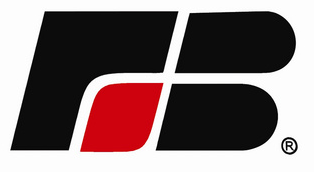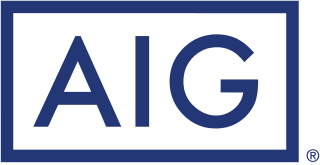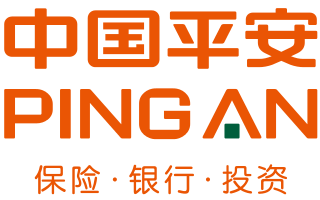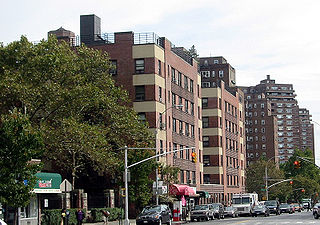Ullico expanded significantly in the 1990s, creating a large number of strategic alliances with other insurance companies and making a number of acquisitions. Beginning in the late 1990s, the organization experienced a range of problems and challenges, including a conflict of interest in pension fund management and insider trading. [8] [9]
Insider dealing scandal
A larger and more significant scandal also occurred in 2002, in which Ullico officers and directors were accused of engaging in insider dealing, stock price manipulation and other offenses.
Structure of the insider deal
In 1997, Gary Winnick, founder of telecommunications company Global Crossing, gave ULLICO officers and directors the chance to buy shares of his new company at substantially lower prices than offered to the public. All but two of Ullico's directors purchased 33 million shares for $7.6 million (or about 23 cents a share), with Ullico buying additional stock. Global Crossing went public, and the stock soared to $62 a share in 1999. This netted Ullico about $1.1 billion in profit. [10]
For a variety of reasons, Global Crossing's stock price then began to decline sharply. [10]
In December 1999, Georgine offered Ullico's officers and directors a chance to participate in its Global Crossing profits. Under Ullico's bylaws, Ullico officers and board members had the right to buy and sell Ullico stock. Georgine sent a confidential letter to board members inviting them to sell their Global Crossing shares and use the proceeds to purchase up to 4,000 Ullico shares at the then-current price of $53.94. The increase in Global Crossing share price had not yet been recorded by Ullico's auditors, PricewaterhouseCoopers. Unlike publicly traded companies, Ullico only set its stock price once a year, based on its prior year book value. When it was, the auditors were sure to recommend a significantly higher Ullico share price. Under the bylaws, the board members could then authorize a share repurchase plan. Board members would be able to redeem their Ullico shares at the higher price. When the Ullico shares were re-priced later to reflect the now-worthless Global Crossing shares, the company's stock price would return to near its previous level. It was a chance to sell their tumbling Ullico shares. [10] [11] [12]
All Ullico shareholders, including union pension plans, could sell a prorated amount based on their total holding. Yet those with fewer than 10,000 shares—mostly the directors—could sell all their stock. Ullico did not offer the deal to others. rank and file union members, who owned the bulk of Ullico stock through professionally managed union pension plans, were not told of the stock offering and would not be permitted to buy stock at the $53.94 price (had they known about the stock offering). [10] [11]
A majority of the Ullico board approved the plan. Many board members duly sold their tumbling Global Crossing shares and bought Ullico stock at the price of $53.94 a share. In May 2000, acting on the auditor's recommendation, the Ullico board of directors approved a share price of $146. [13] On November 2, 2000, Ullico's board approved a plan to repurchase $30 million worth of Ullico stock at $146 a share. [14] Board members were permitted to sell all of their shares, making nearly $13.7 million in profits, while the unions and their pension plans were allowed to sell only a fraction of their shares. In May 2001, the Ullico board, acting on the recommendation of its auditor, set the company's share price at $74 (a new, lower price established almost exclusively by the drop in Global Crossing shares). [10] [11] [15]
Meanwhile, Ullico began losing money. The company lost $22 million in 2001, and $74 million in 2002. Ullico's combined capital and surplus—a key measure of an insurance company's financial health—fell from $51.8 million in 2001 to $17.95 million in 2002. PricewaterhouseCoopers expressed doubt about Ullico's financial solvency. Ullico then issued more stock, raising $50 million from its shareholders, and agreed to sell its newly completed downtown office building near the White House to raise another $160 million. [16]
Scandal exposed
Beginning March 15, 2002, the Wall Street Journal published a series of articles about Ullico's insider stock deal. Global Crossing had filed for bankruptcy in January 2002, and a number of investors suffered significant financial setbacks. Ullico's investment in Global Crossing was well known, and the newspaper's reporters wondered how severely union members' investments had suffered from the bankruptcy. The paper also discovered that a federal grand jury was already investigating the stock transactions. [17]
On April 29, 2002, Ullico's board of directors agreed to conduct an investigation into the legality and ethics of the stock sales. The board meeting which preceded the vote was a contentious one, and the all-day meeting ended very late in the afternoon. But in the end, the board unanimously voted to ask James R. Thompson, former Republican governor of Illinois and chairman and CEO of Winston & Strawn LLP (a large and prestigious D.C. law firm), to review the sales. [11]
Thompson's report was completed in November 2002, but its release was hotly debated. Thompson and two investigators, Robert W. Tarun and Stephen J. Senderowitz (both former prosecutors with the United States Department of Justice and both now attorneys at Winston & Strawn), issued a 100-page report just before Thanksgiving. The report harshly criticized Georgine and the secretive, manipulative nature of the stock trades. The report also concluded that the officers and directors had breached their fiduciary duties and probably violated some states' securities laws. The report noted that the board's compensation committee had approved the repurchase plan even though its members were prohibited from making decisions relating to their own compensation. Although the report said no Ullico directors or officers had violated criminal laws, it did strongly recommend that all board members return any profits to the company. Finally, the report found that Ullico officers may also have made millions of dollars in profits in special purchases and other bonuses, which may not have been properly approved. [18] [19] [20]
Debate over Thompson report
A fight broke out over whether to make the report public. Thompson made the report available to Ullico's board of directors, and required board members to sign statements promising to keep the findings confidential. Without a board vote to release the report, it would have remained secret. A number of board members did not want their role in the stock scandal made public. Board member John J. Sweeney, then president of the AFL-CIO and one of the board members who did not participate in the stock trading scheme, demanded the release of the report. Georgine and Sweeney engaged in numerous heated arguments for several weeks, debating whether to release the Thompson report. [18] Finally, on December 1, 2002, Sweeney resigned from the Ullico board in protest. [21] Four other members of the board followed suit over the next month. [19]
The fate of the Thompson report led to a number of lawsuits. The Maryland Insurance Administration subpoenaed the report, forcing Ullico to challenge the subpoena in court. [22] The United Auto Workers also filed suit to force Ullico to release the report. [23] Even the U.S. Department of Labor filed suit to force the report into public. [24]
In late February 2003, Sweeney threatened to debate the Ullico stock sale in an open meeting of the AFL-CIO executive council in May. [12]
Sweeney's threat, worsening public opinion and continued media scrutiny of the affair led the Ullico board to make the report public. On March 25, 2003, the Ullico board of directors created a special advisory committee to debate the report's release. The advisory committee voted unanimously to accept the report and release it to the public, but voted against acceptance of the report's demand that board members surrender their profits. [19]
At a Ullico board meeting on March 28, Georgine proposed returning his profits to the company. But other board members argued this would pressure them to return their profits, too—something they did not wish to do. The scandal was causing a split in the AFL-CIO's member unions. Sweeney and some unions argued that surrendering profits was the only way to restore confidence in the labor movement. But other unions, led by Martin Maddaloni, president of the United Association of Journeymen and Apprentices of the Plumbing and Pipefitting Industry (the plumbers' union), said they did nothing that directors in other companies had not also done. Meanwhile, an aggravated Thompson issued a public statement accusing Ullico and its legal counsel of making defamatory statements about him and his inquiry and misrepresenting the report's findings. [25]
New board and new investigation
Three weeks later, at Ullico's annual meeting, Georgine was forced out and a new board of directors installed. In a hastily organized board meeting late on April 23, 2003, Sweeney, board member Terence M. O'Sullivan Jr. (president of the Laborers' International Union of North America) and Edwin D. Hill (president of the International Brotherhood of Electrical Workers) nominated a reform slate of 13 new board members. Georgine withdrew his name as a candidate for the board. [26] O'Sullivan and Maddaloni (who agreed in mid-April to return his $418,880 profits) were the lone incumbents to return to the board. [15]
Georgine attempted to stay on as president and CEO of Ullico, but resigned on May 8 after the new board indicated it would attempt to fire him. Georgine subsequently claimed Ullico owed him $2 million in severance pay, a claim Ullico disputed. [27] O'Sullivan was elected Ullico's new chairman, replacing Georgine. [20]
A deeper investigation by the new board found additional problems. Georgine's profits from the stock trade were found to be far higher than anyone had guessed—nearly $8.8 million. Georgine and other Ullico executives also received millions of dollars in special bonuses and deferred compensation never approved by the board. O'Sullivan also disclosed that Ullico officers had loaned Georgine $2.2 million to purchase 40,000 shares of low-priced Ullico stock prior to the stock trading scheme, further enlarging his profits, and that Georgine's salary had risen from $900,000 in 1996 to $5.4 million in 2000. Ullico's compensation committee lacked the authority to approve both the loan and the salary increases but did so anyway. O'Sullivan then issued letters to Georgine and the other officers demanding that they refund this money. [28]
These revelations led to an investigation by the United States Congress. The United States House Committee on Education and Labor subpoenaed Georgine to testify about the Ullico stock trading scheme, but Georgine asserted his Fifth Amendment right against self-incrimination and refused to testify. [29]
Regaining financial stability
In 2001 and 2001, the company issued more stock and sold its newly completed Washington, D.C. office building to raise funds. By Spring 2003, with Terence M. O'Sullivan as the chairman of the new board of directors, Ullico began rectifying its finances. [30]
By year-end 2010, under new day-to-day management and a revamped Board of Directors, the company has returned to its solid financial footing with $6 billion of assets under management.
On May 11, 2013, the financial woes of Ullico Casualty Company (a Ullico subsidiary) led to a court order declaring the entity insolvent. The other Ullico subsidiaries and the Ullico holding company are not directly impacted by that order. [31] [32]
On May 24, 2017, the Florida Third District Court of Appeal reversed a final summary judgment entered in favor of Ullico, concluding that a real estate broker had an ownership interest in purchase money deposits held in an escrow trust account. [33]













